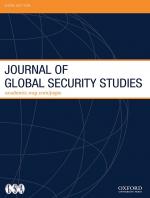Citation:

Date Published:
2022Abstract:
Does an ongoing stalemate in a peace process affect the international agenda toward the conflict and international perceptions about policies that should be adopted to resolve it? We provide a tentative answer to this question by drawing insight from analysis of developments and trends in international media attention to key terms and concepts in the context of the Israeli-Palestinian conflict during cycles of violence, as well as periods of rapprochement and peace negotiations, in the last two and half decades (1996-2021). We find that although attention to the Israeli-Palestinian peace process have been declining over the years, much of the international discussion continues to be devoted to relaunching a negotiation process leading to a two state solution. The ongoing stalemate in such “process,” we show, provide ample opportunities for alternative approaches to emerge advocating alternative endgames (e.g. one-state), international pressure (e.g. BDS), or unilateral steps (e.g. annexation). Each of this approaches promotes an alternative vision and provides a different path, employs its own terminology and vision of the future. The Israeli-Palestinian case study helps illustrate what may happen to peace when the process is stalled, and how a stalemate can produce change in the international debate on the conflict and push for the emergence of new policy directions and agendas.
